Last updated on March 1st, 2024
Advice from three experts in the field of sustainable travel
by Carolyn Ray
Ask any woman if she cares about sustainable travel and you’ll get a firm yes. We want to travel more sustainably — the question is, how?
Recently, I invited three well-respected experts in the field of sustainable travel to join a webinar to talk about the challenges and actions women can take as the world’s most influential travellers. Speakers included: Anna Pollock, founder of Conscious Travel and the 2022 recipient of the second JourneyWoman Award for Lifetime Achievement; Norie Quintos, Contributing editor to National Geographic Travel Media and former executive editor of National Geographic Traveler; and Shannon Guihan, Chief Sustainability Officer, The Travel Corporation and Head of the TreadRight Foundation.
There is no question that women want — and expect — the tourism industry to provide more sustainable experience. Here are the major challenges and shifts that need to take place.
Challenges in sustainable travel
Challenge #1: The travel industry is behind other sectors
The first challenge is that the travel industry is falling behind many other sectors in terms of understanding the basic principles and practices of sustainability.
“Just the very structure and nature of mass tourism is based on our demand for novelty,” says Anna Pollock. “The emphasis is very much on numbers, not on net benefit. Name me a destination that has seriously changed the key performance indicators. They’ll still be expected to produce more visitors next year and recover from the pandemic and exceed pre-2019 numbers. We are talking about a fundamental shift in how we measure success.”
Challenge #2: The UN’s Sustainable Development Goals are not embraced at a meaningful level by the travel industry
“When I look for models and best practice, I don’t look to our sector,” says Shannon Guihan, Chief Sustainability Officer, The Travel Corporation. “I always look outside travel for those who are using the United Nations Sustainable Development Goals (SDGs). The SDGs are embraced by our sector at a very high level, but not at a meaningful level. They’ll look at the goals and they’ll say, I support zero poverty because I go to XYZ place. That’s not actually how the goals work. You need to use the framework for the goals, you need to use the targets and measures and implement them in a meaningful capacity for the destinations that you operate in.”
Pollock says the host, or the supply side of the industry needs to take the lead. “If they were doing the same thing and taking a real genuine interest in the communities in which they’re located, then that would be fine. I would like to see more action come from the supply side of the business,” she says.
“Our industry is about 70 to 80 per cent small to medium size enterprises,” says Guihan. “They can’t put the resources into measures. But organizations such as mine can, and all of our competitors must.”
Challenge #3: The concept of regeneration is over-simplified
Thirdly, the concept of regeneration has been over-simplified, placing too much pressure on the traveller. All three —Pollock, Guihan and Quintos — agree that the travel media have played a role in the oversimplification.
“I’ve been saddened at the way that the concept of regeneration, which is really a very rich concept, has just been oversimplified,” says Pollock.
“You have an industry that has not progressed as far as other sectors when it comes to understanding sustainability, and you have media who is looking for that soundbite,” Guihan says. “I will express great frustration on being asked my thoughts on differences of definitions between regenerative, sustainable, transformative – I don’t care what you call it. You have travel trade or the sector that is saying, well, I need to find the right word because I want to catch the most media hits.”
“Unfortunately, travel media often acts like a promotional arm of the travel industry,” Quintos says. “Often we’re loathe to call out the bad actors, especially if they’re advertisers. I think we need to talk – you know, talk to travel media here, we need to take more seriously the journalism part of travel journalism, and give voice to the voiceless – nature, the place itself.”
“Somehow, it’s all up to the traveller to leave a place better than they found it,” says Pollock. “I mean that’s asking an awful lot of the traveller. To expect a traveller to arrive and spend their entire trip wondering how they’re going to improve a place just doesn’t make sense to me. But that became a very easy media soundbite. You know, leave it better than it was.”
Our choices will affect how tourism evolves
While we’ve always intuitively known that we are all connected and that every action we take affects something else, Pollock encourages women to make more conscious choices when it comes to travel.
“The choices that we make have to be conscious choices. We have to make informed choices,” she says. “We can’t just go on autopilot when travel, because that will simply make things far worse.”
“Imagine [tourism] as more like a forest or a field of grass or a swarm of fish, for example,” she says. “Each one of these networks is actually natural and alive. They are living systems. No one is in charge. In a forest, no one is running around telling the critters what to do. In the soil or the leaves on the tree to do what they do. Every part or every life form in a forest makes its own contribution to the health and appearance. So that’s why I say that what you say, think, do, the choices you make, will affect the way that tourism evolves and changes.”
Many of the systems that have been in place for years are unravelling. “We are facing multiple challenges: climate change, the loss of biodiversity, the inequality of wealth distribution, the weakening of democracy,” Pollock says. “They’re unravelling not just because of failing economics or in some countries a failing political system, they’re unravelling because we have been persuaded to see ourselves and our relationship with the planet, with other life forms, in a certain way that isn’t going to help us anymore.”
Seven ways women can help both people and places thrive
-
- Ask if your travel is nourishing the destination, host and guest
- Pressure the travel industry to create sustainable change
- Change how you travel
- Become ambassadors and support local conservation
- Get more informed about the history of places
- Read travel articles more critically
- Support small, locally-owned businesses
1. Ask yourself how your travel is nourishing the destination, host and guest
According to Pollock, the concept of nourishment has many dimensions.
“Success isn’t just about making a profit, but it is about contributing to the health and wellbeing of the system we’re part of,” she says. “Nourishment has many dimensions. It has social, emotional, physical and even spiritual dimensions.”
“Every step at every stage in our travel journey is one in which we can be making conscious choices that basically answer the question, ‘how am I nourishing myself and the others?’” Pollock says. “How can you nourish yourself on a trip so that you’re growing personally in some way and you come home healthier physically, mentally, emotionally and spirituality so that that trip is really fulfilling.”
When you encounter another person, ask: ‘how is my behaviour potentially nourishing that other person?’ It could be as simple as they received your smile and you word of gratitude. It lifts their day.
2. Pressure the travel industry to create sustainable change
Pollock thinks we need to increase the pressure on the industry and tell them what we want.
“Traditionally we have a tourism industry that has said, ‘we will create sustainable practices if we’re convinced that the market wants it,” Pollock says. “For years, they were saying there’s no market for this ‘green stuff’. The tourist just wants to sit by the pool and have another pina colada and so long as we can do that at a price that makes a profit, we’re fine.”
However, the reality is quite different. “All of the data now is suggesting that the visitor is much more conscious. In fact, I would say the marketplace for change and for responsible behaviour is way ahead of the businesses — and it’s way ahead of the politicians.”
“We’re a market economy. Surely we have to start putting more and more pressure on the supplier to make those changes.” she says.
3. Don’t stop travelling because of emissions, but do change how you travel
For many years we’ve heard carbon offsets are something the traveller should do to offset the impact of our travel.
“I don’t think that we should stop travelling because of emissions alone,” says Pollock. “Too many people now are utterly reliant on our travelling. We, the small percentage of people that are privileged to do that. But I do think we can travel more consciously, mindfully.”
Ultimately, however, the responsibility for reduction is with the industry, which The Travel Corporation’s Shannon Guihan says is still producing too much carbon dioxide. “Our priority first and foremost is reduction of what we produce through renewable energy, new technology, limit energy use, shifting to electric vehicles. Reductions, reductions, reductions must come first,” she says.
Slow travel, longer stays, choosing alternatives to airplanes like mass transit are just some of the things we can do. Look for more fuel-efficient planes, biofuels, hybrid ships and other technologies that are reducing impact.
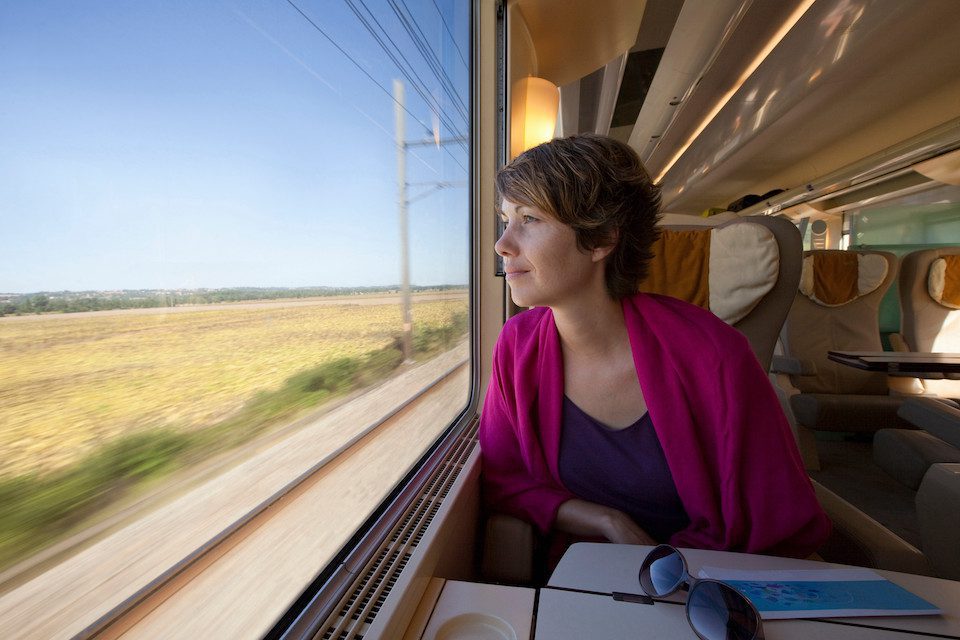
As consumers, we can choose more sustainable modes of transportation when we travel / Photo by nualaimages on Envato
4. Become ambassadors for sustainable travel and support local conservation projects
As an alternative to carbon offsets, Guihan recommends that women shift to nature-based solutions and support local conservation grassroots projects.
“At The Travel Corporation we are shifting towards nature-based solutions that might not be accredited just yet, but are very valuable, such as kelp farming in the northeast through Green Wave and using natural wave action and volcanic minerals through Project Vesta to increase the sequestration ability of the oceans on carbon,” she says.
Quintos says there are incredible immersive sustainable experiences all around us, even in cities, that we can seek out and become ambassadors for.
“There are points of light all over the world that we can look to as models,” she says. “I’m thinking of the Great Bear Rainforest in British Columbia, which is the result of many people over many, many years coming together and working on a landmark protection agreement and pioneering an economy around conservation so visitors can participate in protecting the culture of 26 distinct First Nations and then in a swath of rainforest the size of Ireland.”
“Winnipeg is an amazing city right in the middle of Canada,” Quintos says. “It’s one of those places that’s expanding offerings in the winter, traditionally the low season. It’s a place where they recycle 80 to 90 percent of everything that’s made there. They’ve really become a model city.”
5. Get more informed about the history of places
There are many aspects of the travel industry which are extractive and exploitive.
“Let’s be real,” Pollock says. “The travel industry is in my opinion the velvet glove of globalization. In the old days, they sent out missionaries and they did a lot of damage. And now we often send out a lot of tourists who can do equal amount of damage, thinking they’re doing good.”
“I think we can inform ourselves of the history of places and be willing to draw attention to the fact that these places are the end result, in some cases, of very – of huge oppression and exploitation. And show an interest in the reality that people are living. That to me is then when we start to connect as human beings. But to gloss it all over and just, you know, have a nice holiday and not want to get involved in those issues is completely contrary to everything I’m trying to talk about in terms of nourishment and reciprocity.”
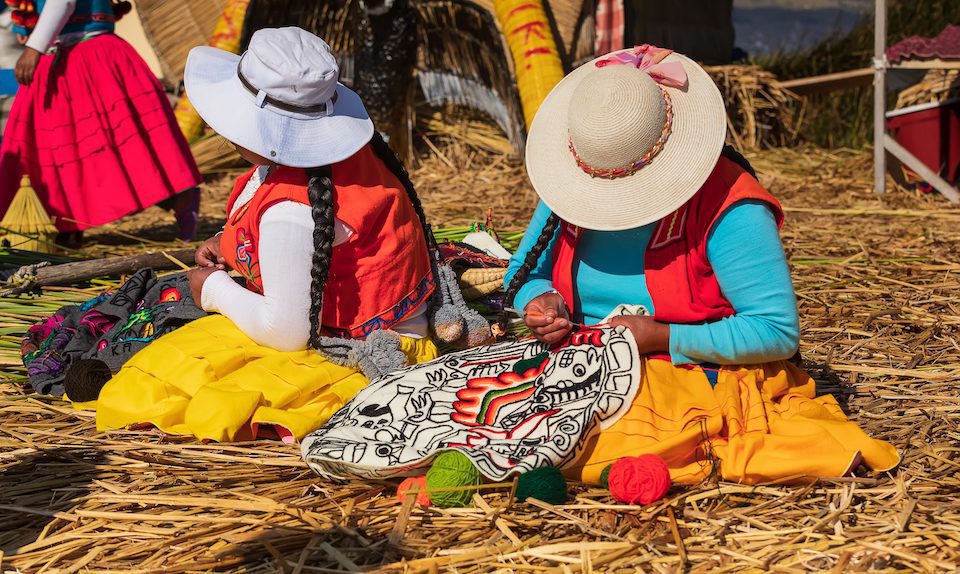
Two women artisans in Puno, Peru. It’s important to connect with and respect the history of the places we travel / Photo by shandylight on Envato
6. Read travel stories more critically
National Geographic’s Quintos recommends that traveller needs to read articles with a grain of salt.
“Read things more critically,” she says. “Ask ‘what is being left unsaid? Who is not being represented?’ Perhaps it’s the people and the place itself.
“What is the tone of the pieces that you see kind of come through your feed? Is it acquisitive – all about taking – bad. Or is it inquisitive?”
She also suggests that when travellers see ‘bucket list’ articles, to remember it’s the media trying to make you feel like you have to have one.
“Often in travel media, we have this bucket list mentality,” says Quintos. “There’s an excessive focus on the bucket list, creating kind of FOMO or YOLO you know, fear of missing out, you only live once, which has definitely contributed to problems in over tourism and rampant consumerism.”
“We can consciously take a step back and say, okay, I don’t actually have to do what I’m being asked to do by the media,” she says.
7. Support small, locally owned businesses
As travellers, we can put more thought into following the money when we travel and support local communities.
“If you take a resort like Cancun, for example, 80 percent of the income leaves Cancun,” says Pollock. “It doesn’t even stay there. And yet they’ve been subsidized and invested in by the state as well as private sector investors.”
“Most of the money that’s coming in is now going out. That’s wrong. That’s a failing system. That doesn’t make sense to me. One of the questions you could be asking if you’re planning is how can I stay in places that are locally owned and run? And how can I find out where some of the money flows to? Are these – what I’m eating procured locally? Are these souvenirs just been shipped in from China? That kind of thing.”
To celebrate local communities, the Travel Corporation has designed a Make Travel Matter Experiences™ program which is mapped against the Sustainable Development Goals.
“We took the target for 11 of those 17 goals and from those targets we created our own criteria for what “sustainable” tourism experiences are,” Guihan says. “Our teams specifically seek out travel experiences that aren’t traditionally on the travel list. They really try and feature what makes a place a good place to live, because at the end of the day if you’re not a good place to live you can’t be a good place to visit and try and encourage those experiences that support what a place is today and social and environmental justice. For example, a walking tour of London led by refugees who now have employment because of the tourism sector.”
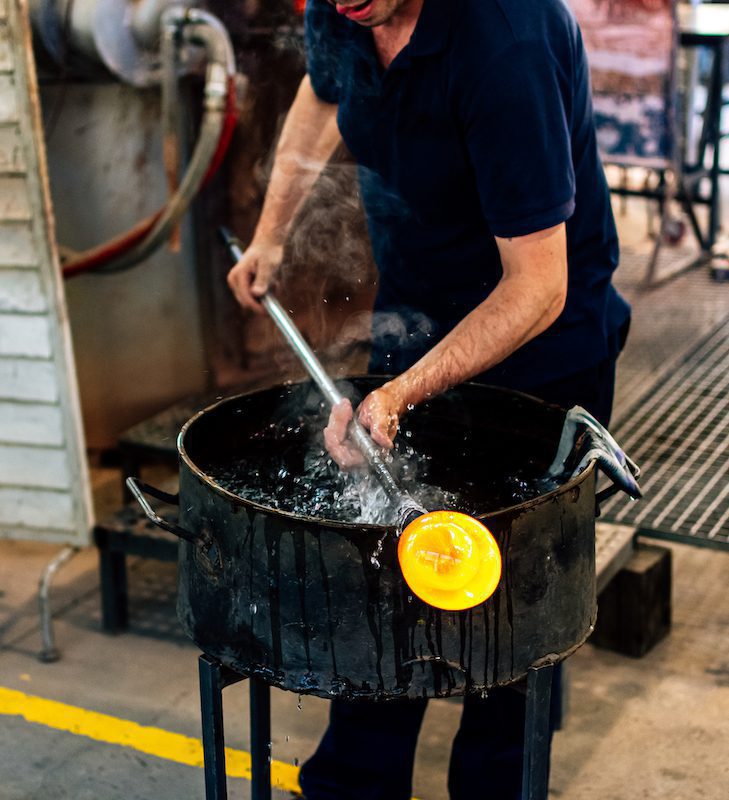
As travelers, we must ensure we are supporting truly local artisans, and not products being shipped in from China / Photo by antoniohugophoto on Envato
As women, we can help create change in the industry
As the industry catches up to consumer sentiment, we can make conscious choices about how we travel. As the primary influencers and consumers of travel, women can advance and lead a new way to travel.
“When you look at the proportion of people on the planet that are able to travel internationally, the number is really quite small,” Pollock says. “Every one of us that is able to participate in seeing the world and several countries a year actually are part of a really small elite. If we can model good travel behaviour then we can have a big impact.”
Thank you to our speakers for their candid insights and to our webinar sponsor, Trafalgar Tours. We invite you to make a donation to the Adventure Travel Conservation Fund, which funds local projects engaged in the conservation of unique natural and cultural resources of adventure travel destinations.
To read the full transcript of the webinar, please click here.
More on Sustainable Travel
Sustainable Train Travel: A Breathtaking Journey Through the Swiss Alps
On Trafalgar Travel’s first ‘Swisstainable’ train tour, women can experience Switzerland’s most iconic train journeys and travel sustainably.
Practical Tips for Women to Prepare for Long-Term Travel
There’s nothing more exciting than being on the road for months, but planning for a longer trip requires some preparation to keep costs down and travel safely and well.
Five Ways You Can Teach Your Grandchildren About Sustainable Travel
As good travellers, we can teach our grandchildren how to make good decisions about the Earth when they travel.

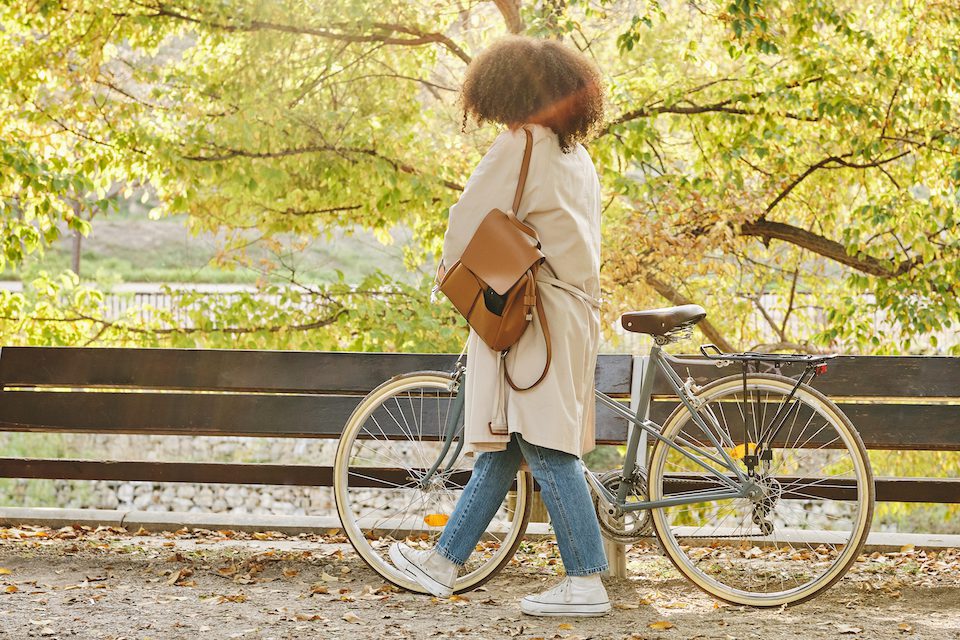



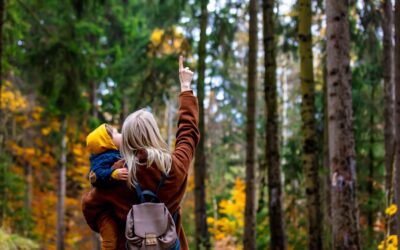
I agree with many of the wonderful ideas in this article, however…. We really must travel LESS. Please, no short flights, or weekend getaways, extravagant resorts, etc. The reality is — those days are over — IF we are seeing the climate crisis as it actually exists. I understand we may be a small percentage of it all and yet it is the very elite that have the time and money to do things differently. Better. More conscientiously. PLEASE no private jets! I worked with them for many years and the amount of waste is appalling not to mention simply the fuel consumption. Long flights or trains, long stays, simpler accommodations, less often. Please.